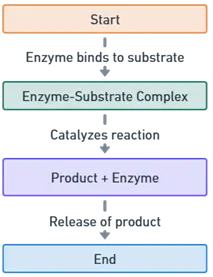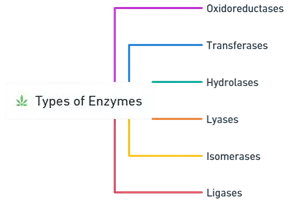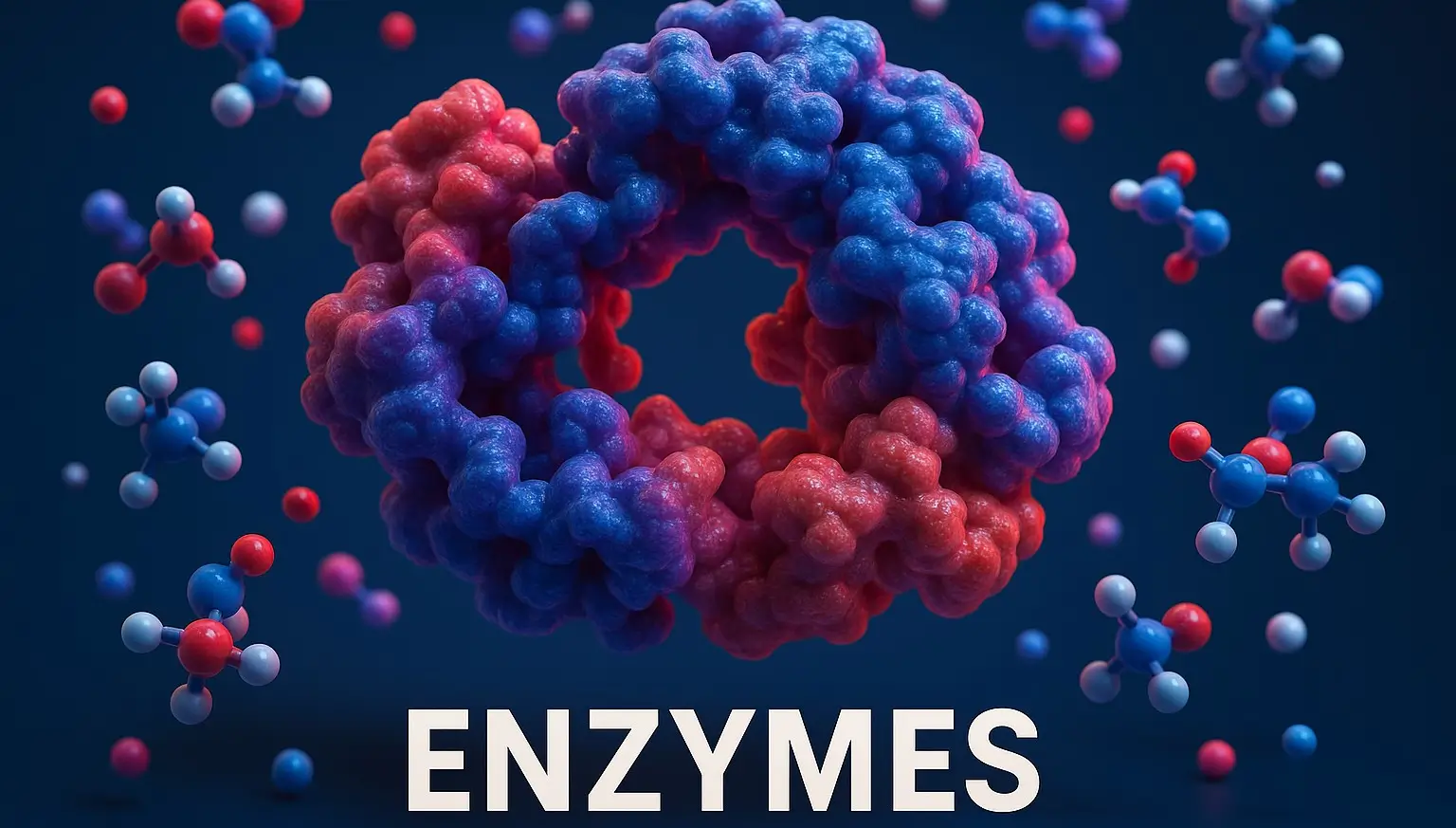Enzymes Introduction
- Enzymes Introduction: It is biological catalysts that speed up chemical reactions in living organisms.
- They are typically proteins, though some RNA molecules also exhibit catalytic properties.
- Enzymes are crucial for various biochemical processes, including digestion, metabolism, and DNA replication.
Characteristics of Enzymes
-
Specificity:
- Enzymes are highly specific, meaning they catalyze only one type of reaction or react with a single substrate.
- This specificity is due to the unique active site of each enzyme, where the substrate binds.
-
Efficiency:
- Enzymes significantly increase the rate of chemical reactions, often by a factor of millions.
- They achieve this by lowering the activation energy required for the reaction.
-
Regulation:
- Enzyme activity can be regulated by various factors, including temperature, pH, and the presence of inhibitors or activators.
- This regulation ensures that metabolic processes occur at the right rate and time within the cell.
-
Reusability:
- Enzymes are not consumed in the reactions they catalyze.
- After facilitating a reaction, they are free to engage with another substrate molecule.
How Enzymes Work

- Enzyme function by binding to their specific substrate(s) to form an enzyme-substrate complex.
- This complex undergoes a chemical transformation to produce the product(s), after which the enzyme is released unchanged.
- The site where the substrate binds on the enzyme is called the active site.
-
Active Site of Enzymes:
- The active site is a specialized region on the enzyme where the substrate binds.
- It is typically a pocket or groove on the enzyme’s surface and is formed by the enzyme’s three-dimensional structure.
-
Enzyme-Substrate Complex:
- The substrate binds to the active site, forming an enzyme-substrate complex.
- This complex stabilizes the transition state and reduces the activation energy needed for the reaction.
-
Product Formation of Enzyme:
- After the reaction occurs, the enzyme releases the product(s) and is free to bind to new substrate molecules.
Factors Affecting Enzyme Activity
-
Temperature:
- Enzyme activity rises with temperature up to an optimal point.
- Beyond this optimal temperature, enzymes denature and lose activity.
-
pH:
- Each enzyme has an optimal pH for maximum activity.
- Deviation from this pH reduces activity or leads to denaturation.
-
Substrate Concentration:
- Increasing substrate concentration increases reaction rate until saturation.
- Beyond saturation, the rate plateaus as all active sites are occupied.
-
Inhibitors and Activators:
- Inhibitors: Molecules that reduce enzyme activity.
- Competitive inhibitors bind to the active site.
- Non-competitive inhibitors bind elsewhere on the enzyme.
- Activators: Molecules that increase enzyme activity.
- Inhibitors: Molecules that reduce enzyme activity.
Types of Enzymes
- Enzymes are classified into six major categories based on the type of reaction they catalyze:
- Oxidoreductases: Catalyze oxidation-reduction reactions.
- Transferases: Transfer functional groups from one molecule to another.
- Hydrolases: Catalyze the hydrolysis of various bonds.
- Lyases: Add atoms or groups to double bonds or form double bonds by removing atoms or groups.
- Isomerases: Catalyze the rearrangement of atoms within a molecule.
- Ligases: Catalyze the joining of two molecules with the input of energy (usually from ATP).

Importance of Enzymes
- Enzymes are vital for life because they regulate the speed of biochemical reactions that are necessary for cell function.
- Without enzymes, these reactions would occur too slowly to sustain life.
- They are also used in various industrial and medical applications, such as drug manufacturing, food processing, and disease diagnosis.

